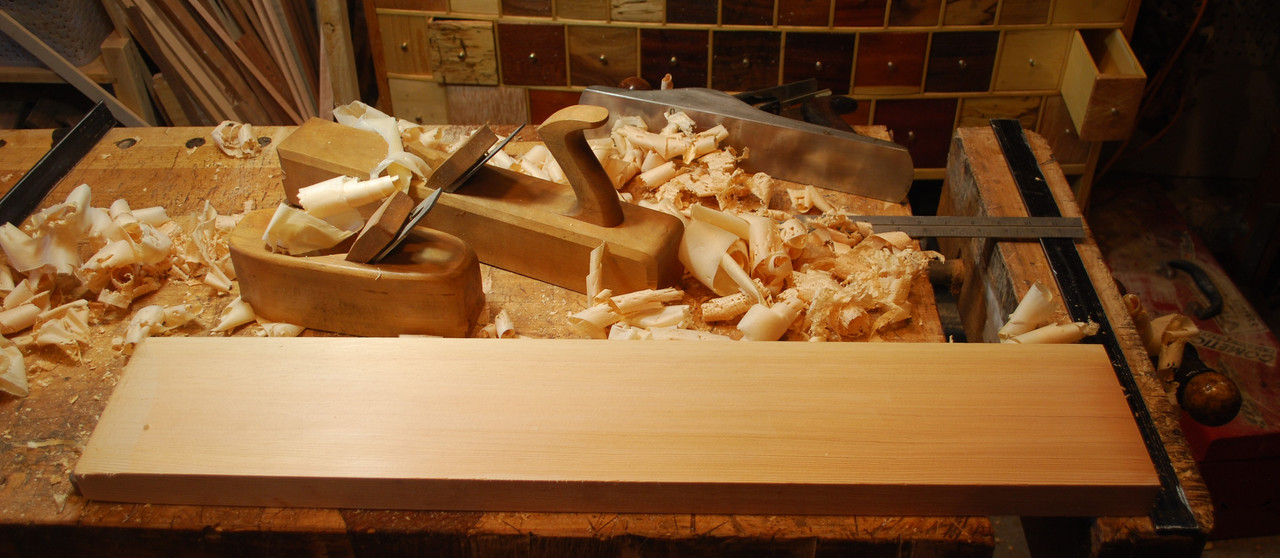This is the second and final build thread for bookcase made primarily out of Red Grandis. There is an earlier thread that covers carcass construction through fitting the drawer fronts.
Drawer fronts are going to have a veneered border of vertical grain darker wood (sorry can’t remember species), and also cock beading in contrasting Paduak. First step is using cutting gauge to layout shallow border rabbits. Then “joint” the edges of veneer strips with sandpaper holding them between the benchtop and another board. Before I applied the veneer border, I cut a deeper rabbit for the 3/16” cock beading, then the veneer is glued in place held with tape. Last two picture show what I think is an interesting contrast between the surface quality after card scraper as compared to 220 grit sandpaper.
Here is the Paduak cock beading – curved profile is created with scraper and then ripped from larger stock. Because the Paduak color fades quickly, I spray it with a quick coat of shellac before assembly.
Next is dovetailing drawers. No need to explain anything to this crowd. Might point out that with five drawers, it was easier for me to plow drawer bottom groove on the router table. Also using chisel and dividers simplifies layout. Finally for half blind dovetails on drawer fronts, I remove most of the waste with a trim router.









.jpg)








 Reply With Quote
Reply With Quote














































 Please help support the Creek.
Please help support the Creek.

